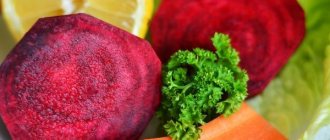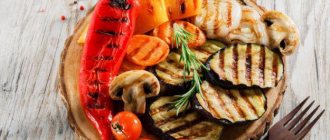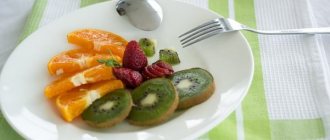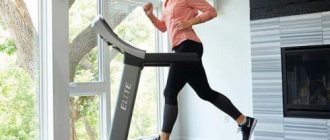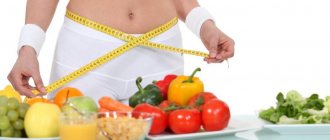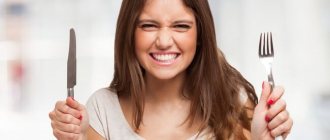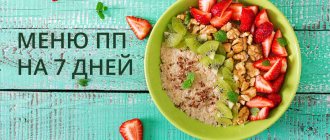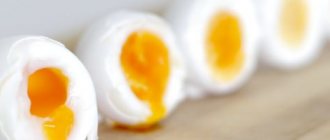Constantly lying down has a negative effect on the digestive system. The patient's abdominal muscles weaken and intestinal motility is disrupted. Due to low mobility and poor emotional state, appetite may worsen, and swallowing food is often impaired. However, the patient must receive all the necessary substances with food. This is necessary for restoration of strength and effective treatment. What can bedridden patients eat? What to prepare and how to feed the patient?
What should the diet be like?
It should be noted right away that the diet for bedridden patients must comply with the basic principles of proper nutrition, which apply to any person. These include:
- Adequacy. The diet must correspond to the body's energy expenditure.
- Balance. Nutrition should be balanced in essential nutrients.
- Regularity. A certain number of meals per day should be provided.
- Safety. You need to maintain hygiene and be able to distinguish between stale and fresh foods.
In this case, it is necessary to take into account the characteristics of the patient’s body indicated above. Let's look at the basic principles of nutrition for bedridden patients.
Eating protein foods
Getting the right amount of protein plays an important role in diets for bedridden people. Proteins “repair” and build body tissue, including muscle tissue. Protein contains basic building blocks known as amino acids. Our body synthesizes all but nine amino acids, which is why they are called essential. The main sources of protein are:
- fish;
- turkey;
- chicken;
- red meat;
- legumes;
- dairy products (milk, yogurt, kefir, cottage cheese);
- eggs.
Daily intake depends primarily on weight, as well as age and the number of calories burned. Typically, the norm for bedridden patients is 1 g per kilogram of body weight. It may be higher (for example, when bedsores form), but you should not eat too much protein, especially if the patient suffers from kidney diseases. Food for bedridden patients should be balanced in proteins, fats and carbohydrates.
Important: if a patient develops bedsores, his body’s need for nutrients becomes even higher. Thus, protein deficiency negatively affects healing. Every day, a wound can lose more than 50 g of protein with exudate. As a result, patients’ need for this substance increases by one and a half to two times.
Dr. Nazardan's Liquid Diet
Another liquid diet option is Dr. Nazardan's diet. It was developed by a specialist in the American city of Houston for people who are overweight. Its creator is convinced: the only way to get rid of extra pounds is to reduce the volume of the stomach.
The diet is based on the following basic principles:
- Every hour you need to drink a glass of liquid: water, tea, herbal infusion, fruit or vegetable juice.
- Food should be cooked without adding oil: steamed, in the oven, in a slow cooker or in a grill pan.
- The basis of the diet should be foods rich in protein: lean meats, fish, eggs, dairy and fermented milk products.
- You need to eat often, in small portions - 200-250 grams at a time.
- It is necessary to completely exclude semi-finished products, fast food, fatty sauces, confectionery, and flour products from the diet.
Duration of the diet is up to 14 days. A sample menu could be as follows:
| Breakfast | Snack | Dinner | Afternoon snack | Dinner | |
| 1 day | Buckwheat porridge on water | A glass of orange juice | Vegetable broth, 100 grams of any lean meat, vegetable salad | Dried fruit compote without sugar | Curd casserole with dried fruits |
| Day 2 | Oatmeal on water | Glass of apple juice | Baked white fish, vegetable salad | Berry juice without sugar | Steam omelet with herbs, tomatoes, curd cheese |
| Day 3 | Semolina porridge on water | Glass of grape juice | Vegetable broth, 100 grams of any lean meat, vegetable salad | Glass of grape juice | Vegetable salad, glass of kefir |
| 4 day | Two egg omelette | Berry juice without sugar | Grilled or oven-baked vegetables, steamed chicken | Glass of apple juice | two boiled eggs, vegetable salad with olive oil |
| 5 day | Any fruits, nuts with the addition of yogurt | Dried fruit compote made from sugar | Vegetable broth, 100 grams of any lean meat, vegetable salad | A glass of orange juice | A glass of low-fat kefir |
With this type of nutrition, light training is allowed three times a week. An evening jog or stretching or yoga is ideal.
Calorie sufficiency
To prevent weight gain, the diet should contain fewer calories than the diet of a physically active person. Low-calorie foods include fresh fruits and vegetables, whole grain cereals (boiled and liquid), lean meats, and low-fat or low-fat dairy products. Moreover, they should be the basis of any person’s diet according to WHO recommendations. Eating adequate calories reduces the risk of developing overweight or obesity, two factors that can lead to heart disease, hypertension and/or high blood sugar. However, many bedridden patients have poor appetite - in such cases, on the contrary, it is difficult to achieve the norm of calorie intake.
Preparing for the diet
As many people know, a diet, especially such a radical one, is stressful for the body. A sudden transition from one type of diet to another can cause the development of serious diseases. Therefore, you should switch to a liquid diet gradually, reducing your daily calorie intake. A sample menu might look like this:
| Breakfast | Snack | Dinner | Afternoon snack | Dinner | |
| First day | Oatmeal with water and applesauce | A glass of kefir or yogurt | A cup of vegetable soup, 100 grams of boiled chicken fillet, fresh vegetable salad | Any fruit, 100-150 grams of yogurt without sugar | Omelette, vegetable salad |
| Second day | Curd casserole with dried apricots, raisins, honey | Cup of coffee with milk, protein cookies | Any steamed white fish, vegetable salad with olive oil | Any fruit, 8-10 almonds | A glass of kefir, two boiled eggs, vegetable salad |
| The third day | Smoothie: 200 ml water, a few spinach leaves, a stalk of celery, any berries, a green apple | Rye bread sandwich with chicken ham, tea | Steamed beef or beef tongue, buckwheat porridge, any vegetables | Any fruit | glass of kefir |
A gradual transition to a new diet will allow the body to adapt and prepare for the upcoming liquid diet.
Availability of healthy fats in the diet
Don't forget about fats. They are required for the normal functioning of the human body. It is recommended to give preference to unsaturated fats (found in fish, some vegetable oils) rather than saturated fats found in meat, dairy products, etc. (but they should not be completely excluded). Unsaturated fats have many beneficial effects - they have a beneficial effect on the cardiovascular system, improve sleep and brain function. They also help strengthen bones that are weakened by lack of physical activity. Sources of healthy fats include salmon, sardines, cod, flaxseed oil, etc.
Important! Coordinate your diet with your doctor, ask what you can feed and what you cannot feed. Some products may interfere with the effects of medications or cause allergic reactions.
Vitamins and minerals
Patients who consume insufficient amounts of food may experience a deficiency of vitamins, macro- and microelements, which is fraught with negative health consequences. For example, low hemoglobin levels (due to iron deficiency) are associated with the development of bedsores and slower wound healing due to decreased oxygen content in the tissues. Zinc deficiency also impairs healing by reducing the rate of protein synthesis and wound epithelialization. Therefore, vitamin and mineral supplements can be included in the diet of patients (after consultation with a doctor). Overconsumption of any one mineral or vitamin should be avoided as it may interfere with the absorption of other substances and cause side effects.
What is a liquid diet
By liquid system we mean a special nutrition system aimed at weight loss. The creators of the method convince us that more fluid helps remove waste and toxins from the body, reduce appetite, and cravings for unhealthy high-calorie foods, as a result of which you can get rid of 5-7 kg in just two weeks. As the name suggests, the basis of the diet is liquid meals, various drinks and water. The daily diet is very limited, so sticking to this diet for more than 14 days without consulting a specialist is strictly prohibited.
Varieties
The liquid diet comes in several varieties:
- Protein. The basis of the diet is meat broth cooked with lean pork, chicken, fish, as well as dairy or fermented milk products.
- Transparent. The basis of the diet is meat broth cooked with lean pork, chicken, fish, water, and herbal decoctions.
- Juice. The basis of the diet is freshly squeezed juices from fruits, vegetables, berries, and herbs.
- On smoothie cocktails. The basis of the diet is drinks based on water or kefir with the addition of vegetables, fruits, nuts, and berries.
Such a nutritional system implies serious restrictions on caloric intake. During the diet period, side effects may occur such as headache, weakness, dizziness, decreased concentration caused by a lack of nutrients.
Diet
The classic three-a-day diet of an ordinary person is not suitable for a bedridden person. Typically, such patients eat little and are not able to consume in one sitting the amount of food that the body needs. You should try not to force feed, but to stimulate the appearance of appetite. The diet should include about 6 meals. What to feed a bedridden patient? Products should be selected taking into account the principles described above, the doctor’s recommendations and the patient’s wishes.
One more point: the food should be warm (not cold or hot). Hot food can burn the mucous membranes, and cold food can lead to colds due to weakened immunity.
Diet rules
The liquid diet is based on the following basic rules:
- The diet should be composed only of approved foods, mainly soft, watery or crushed.
- You can find cereals in the list of permitted products. Porridges from them can be prepared only with water or half with milk.
- Try to make your diet varied, experiment, prepare different smoothies and drinks.
- It is recommended to eat frequently, every 1.5-2 hours, but in small portions - about 200-250 g.
- It is allowed to consume freshly squeezed juices diluted half with water.
- The duration of the diet should be no more than 14 days. You can use it again no earlier than in a month.
The main rule is that you must carefully monitor your well-being during the diet period. If weakness, dizziness or other side effects occur, immediately change your diet and consult a doctor.
Feeding process, patient position
Bedridden patients are not able to take care of themselves. They need help washing their hands (if this is difficult, then at least disinfect them with special means or napkins). Patients may drop food, so place a tablecloth or towel on the bed before eating. It is necessary to ensure that crumbs do not fall on the bed. They can cause bedsores.
How to feed a bedridden patient? Before starting a meal, he needs to be seated in bed or raised slightly. Feeding while lying down is dangerous because the patient may choke or choke. If it is difficult for him to hold his head, it is necessary to hold it in an upright position.
The spoon should be filled 2/3 full to avoid spilling food. You need to feed slowly. The spoon is first brought to the lower lip so that the patient can smell the dish. As for drinking, if the patient is unable to drink from a cup, you need to use sippy cups or give liquid from a dessert or teaspoon.
Formula feeding
Some patients suffer from severe dysphagia, i.e. swallowing disorder. In such cases, special mixtures are used for feeding, such as Nutridrink, Nutrizon and Modulen. The doctor should consult caregivers and recommend the most appropriate product (low-calorie or high-calorie, with or without fiber, gluten or lactose, etc.). The mixture can be given from a spoon, in a bottle or sippy cup. In case of very severe dysphagia, unconsciousness, injuries of the esophagus and larynx, stroke and some other situations, feeding of bedridden patients is carried out through a tube.
If the patient can eat regular food, the mixtures can be used as a dietary supplement.


